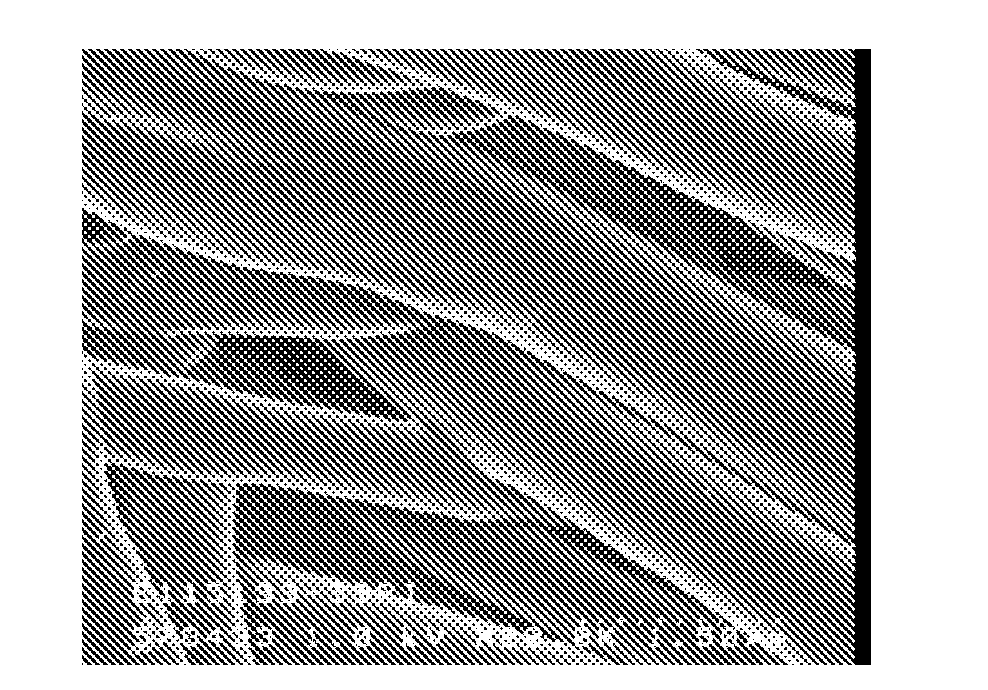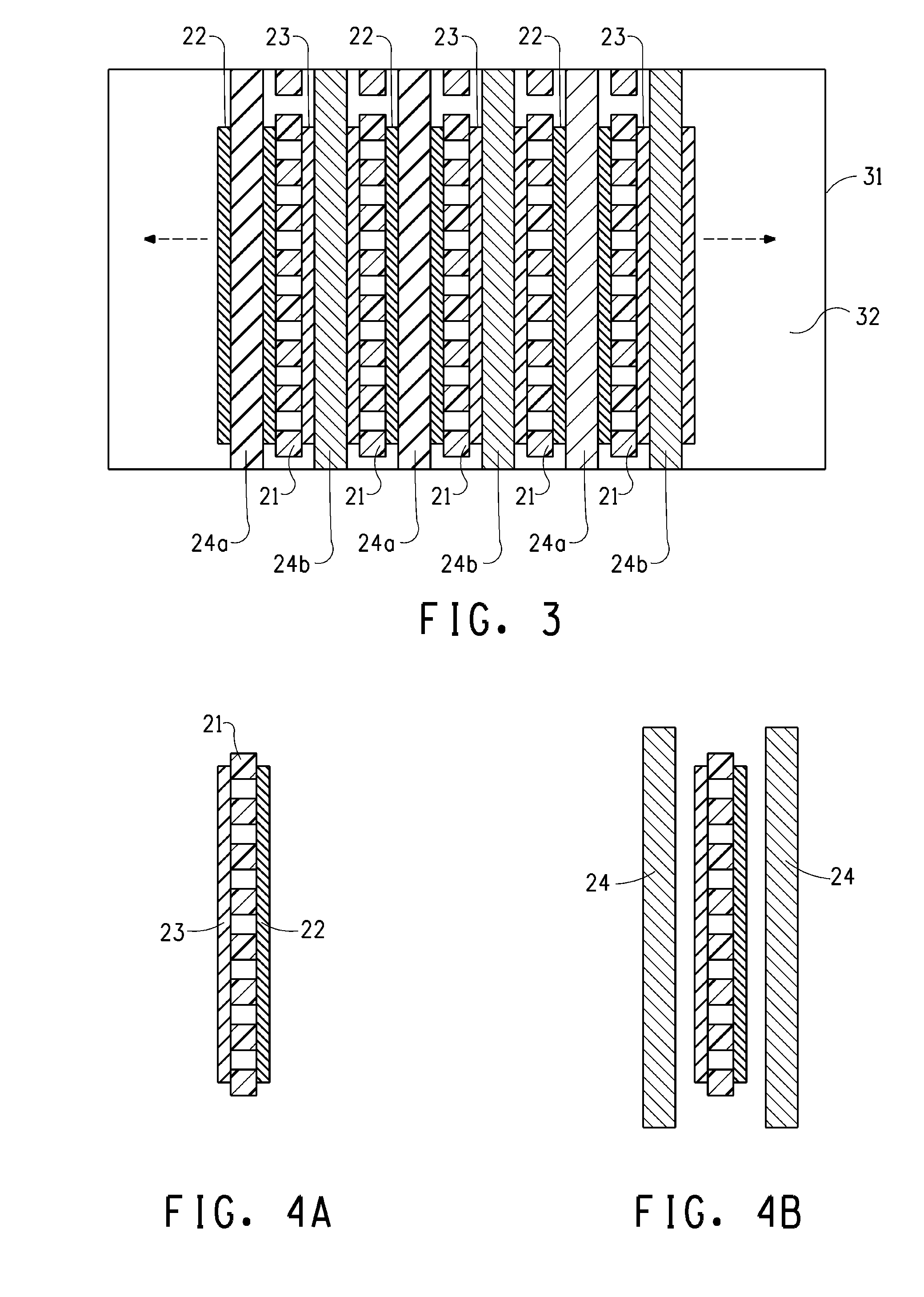Polyimide nanoweb with amidized surface and method for preparing
a technology amidized surfaces, which is applied in the field of preparation and use of aromatic polyimide nanowebs with amidemodified surfaces, can solve the problem of hydrolytic instability of polyimid
- Summary
- Abstract
- Description
- Claims
- Application Information
AI Technical Summary
Problems solved by technology
Method used
Image
Examples
examples 10 and 11
Polyimide Nanoweb Partially Amidized with N-Alkylamines
[0125]5 g of n-dodecylamine was dissolved in 100 mL of DMF solvent. Samples of the polyimide nanoweb of Example 1 were immersed in the solution at 50° C. for periods of 1 hour and 20 hours, respectively. The samples were immersed at the same time, removed after different time intervals, then rinsed three times with isopropanol. Scanning electron microscopy revealed no change in the fiber morphology relative to an unreacted control.
[0126]Diffuse reflectance infrared spectroscopy showed absorption peaks at 2852 and 2919 cm-1 confirming aliphatic groups. Peaks at 1545, 1650 and 3267 cm-1 confirmed secondary amide groups. The infrared spectra of the reaction products retained the strong absorption peaks at 1700 and 1500 cm-1 of the original polyimide, suggesting that the amidation reaction was largely restricted to a thin layer of polymer on the surface of the nanofibers.
examples 12 and 13
Polyimide Nanoweb Partially Amidized with N-Alkylamines
[0127]A 5% by weight solution of n-hexadecylamine in DMF was prepared. Samples of the polyimide nanoweb of Example 1 were immersed at 50° C. in the solution for periods of 1 hour and 20 hours, respectively, then rinsed three times with isopropanol. Scanning electron microscopy revealed no change in the fiber morphology relative to an unreacted control. Diffuse reflectance infrared spectroscopy showed absorption peaks at 2852 and 2919 cm-1 confirming aliphatic groups. Peaks at 1545, 1650 and 3267 cm-1 confirmed secondary amide groups. The infrared spectra of the reaction products retained the strong absorption peaks at 1700 and 1500 cm-1 of the original polyimide, suggesting that the amidation reaction was largely restricted to a thin layer of polymer on the surface of the nanofibers.
examples 18-21
Poly(Amic Acid) Solution 2 (PAA2)
[0131]A polyamic acid of PMDA / ODA in DMF was prepared at 97% stoichiometry and 23.5% solids by weight. The amic acid was end-capped with phthalic anhydride at 0.04% by weight. (need to confirm)
NANOWEB #2 (NW-2)
[0132]The PAA solution so prepared was charged to the apparatus depicted in FIG. 7. FIG. 7 depicts one embodiment of a suitable electroblowing apparatus. The polyamic acid solution was spun into a nanofiber web per the electroblowing process described in (our provisional) at a solution pressure of 5.5 bar at a temperature of 37° C. and process gas temperature of 72° C. and velocity of 5833 meters / minute.
[0133]The nanoweb was then manually unwound and cut with a manual rolling blade cutter into hand sheets approximately 12″ long and 10″ wide. The resulting nanoweb was characterized by porosity of 85±5%, and basis weight of 18±2 g / m2.
PUM
| Property | Measurement | Unit |
|---|---|---|
| number average diameter | aaaaa | aaaaa |
| number average diameter | aaaaa | aaaaa |
| temperature | aaaaa | aaaaa |
Abstract
Description
Claims
Application Information
 Login to View More
Login to View More - Generate Ideas
- Intellectual Property
- Life Sciences
- Materials
- Tech Scout
- Unparalleled Data Quality
- Higher Quality Content
- 60% Fewer Hallucinations
Browse by: Latest US Patents, China's latest patents, Technical Efficacy Thesaurus, Application Domain, Technology Topic, Popular Technical Reports.
© 2025 PatSnap. All rights reserved.Legal|Privacy policy|Modern Slavery Act Transparency Statement|Sitemap|About US| Contact US: help@patsnap.com



